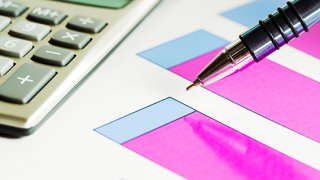Seasonal adjusted figures from the national accounts show that the gross domestic product (GDP) measured in fixed prices for the mainland economy grew 1.1 per cent from July to August. Leaving out fishery, the growth was closer to 0.4 per cent. The activity in the service industries continued to grow in August. Among the service industries, administrative and support service activities in particular contributed to the growth in GDP.
– The mackerel quota was larger this year, and about half the quota was landed in August. This increased the gross product in the fisheries and the fishing industry, says Pål Sletten, head of national accounts.
After the United Kingdom left the EU and became an independent coastal state, Norwegian and British authorities were unable to secure a bilateral agreement on mutual access to shared stocks and exchange of fishing quotas. Consequently, Norway had to determine their own mackerel quota, and the authorities encouraged the fishing fleet to fish as much as possible of this year’s quota in Norwegian waters. This led to mackerel fishing taking place earlier than usual.
– Besides fishing, the recovery from the pandemic continued and mainland GDP increased for the fifth consecutive month in August. The summer months are affected by strong seasonal variations and the figures should be interpreted with caution, says Sletten.
Other goods production increased 1.7 per cent from July to August. Most of the growth is due to mackerel fishing. The largest negative contributions to growth came from electricity production along with construction.
The economic activity in the service industries increased 1.4 per cent in total from July to August. Among the service industries, administrative and support service activities was the largest positive contributor which is due to unusually low levels of activity in travel agencies and tour operators in July, which at the time was still negatively impacted by travel restrictions.
The gross product in manufacturing and mining decreased 0.7 per cent in August. Lumber had the largest negative contribution, but most manufacturing had a moderate decline in August. Food products on the other hand experienced good growth, especially processing of fish.
Oil and gas extraction grew 6.3 per cent. Total GDP for Norway, including petroleum activities and ocean transport, increased 2.0 per cent measured in fixed prices. The production capacity at the Johan Sverdrup field was increased in May and the Martin Linge field was opened this summer. Both factors contributing to the volume growth in August.
Consumption
Total household consumption increased for the fifth month in a row and grew 0.6 per cent in August. Nonetheless, total consumption was 1.3 per cent lower than before the pandemic hit.
Service consumption increased 3.4 per cent from July to August. Recreational and cultural services as well as restaurant and hotel services contributed the most to the growth this month. These consumption groups were the most affected by the pandemic. Despite having experienced growth for five consecutive months, the consumption level was 5 per cent lower than before the pandemic.
Consumption of goods decreased 1.7 percent but is still up 12 per cent compared to February 2020. Non-alcoholic beverages and food contributed the most to the decline in August. This can be seen in relation to an increased consumption at restaurants, canteens as well as alleviated travel restrictions. Car purchases on the other hand contributed positively to the consumption of goods in total.
Purchases abroad increased 27.3 per cent but is still 80 per cent lower than before the pandemic. Foreigners’ consumption increased by almost 70 per cent.
Final consumption expenditure of general government increased 0.8 per cent in August. Developments in final consumption expenditure of general government are based on various indicators but will be revised when accounts for the central government and municipalities for the third quarter become available. These figures must be regarded as preliminary. Given the unusual circumstances, there is greater uncertainty.
Exports and imports
Total exports in fixed prices declined 0.9 per cent in August. Exports of civilian ships contributed to the decline, as well as electricity. An increase in the export of oil and natural gas counteracted the decline.
Total imports increased 2.3 per cent in august. New fighter jets as well as transport equipment contributed to the growth in August.
Investments
Seasonally adjusted gross fixed capital formation increased 4.7 per cent in August. The rolling three-month growth from March-May to June-August was 1.6 per cent.
The delivery of new fighter jets was the largest contribution to the increase in august. Dwelling services declined for the second month in a row. In the three-month period June-August, dwelling services were 3.5 per cent lower than in the period March-May.
Revisions
In connection with new monthly figures, there will be revisions. The statistics used will not normally change for previous months. Seasonally adjusted series can, however, be affected, since the basis for the seasonal adjustment changes when new periods are added. The National Accounts has published an article on the revisions in the monthly national accounts.
In the current situation, the uncertainty is greater than normal. Revisions are therefor to be expected, also due to potential changes in the underlying data for previously published months. The growth in mainland-GDP have been revised in July, from 0.4 per cent to 0.6.
In certain areas, new underlying statistics have been incorporated for previous months. The macroeconomic picture remains, however, as previously published.
Thursday 12th of March 2020 the Norwegian government introduced actions against the spreading of COVID-19 in Norway. The seasonal adjustment routine during the pandemic is done in such a way that figures during the crisis (from March), are not included when calculating the seasonal pattern. Technically, in the seasonal adjustment routine, this is done by specifying March and following months as outliers. The seasonal adjustment routine of Statics Norway is in line with the recommendations of Eurostat
